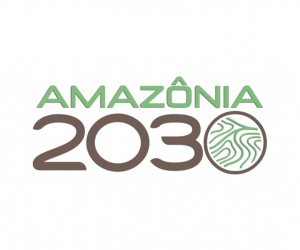News > Release
15.02.22
Identifying Priority Areas for Restoration: Amazon Biome
Amazon can save Amazon itself. It is the conclusion of the study on the restoration of priority forest areas, developed by IIS researchers Bernardo Strassburg, Paulo Branco, and Álvaro Iribarrem. The research shows that if only 10% of the degraded area of the Amazon were optimally restored, a revenue of up to BRL 132 billion could be generated. Opening new financing possibilities with this revenue.
This would occur because, with the prioritized restoration of this 10%, equivalent to approximately 5.7 million hectares, about 2.6 billion tons of Co2 would be removed from the atmosphere. “If you commercialize this potential carbon credit coming from these areas, for example, you have a scenario that is good for many things at the same time. In other words, you generate revenue from the carbon obtained from restoration”, explains Strassburg, who is executive director of the International Institute for Sustainability (IIS). He also argues that it is possible to use this money for the benefit of the forest itself.
“We know that more or less half of this amount would be allocated to farmers for restoration costs, to the locals, and to those who carry out this restoration. But there is still 50% left, R$ 66 billion. This amount could be used to invest in public policy, to finance sustainable development programs, to seek more sustainable paths for the development of the Amazon itself”, defends the researcher.
PRIORITIES
The recovery of deforested and degraded areas is a priority for overcoming global challenges, such as the mitigation of climate change. In Brazil, the goal established through the National Plan for the Recovery of Native Vegetation (Planaveg, 2017) is to recover 12 million hectares of native vegetation in all Brazilian biomes by 2030. If we consider that the Brazilian Legal Amazon occupies almost 60% of the national territory (IBGE, 2019), forest recovery in the region should be seen as an issue, above all, strategic, in view of the high rates of deforestation and the high potential for natural regeneration of the biome.
The results of the study, however, show that isolated restoration, without planning priority areas, can be an unwise choice.
“A study prior to ours shows that if you restore 10% of the Amazon without prioritization, without planning, the process is much less efficient. The cost is up to 10 times more effective if you follow the prioritization”, points out Strassburg. He also points out that if managers choose only by the cost factor, that is, where it would be cheaper to restore, instead of going to factors such as climate or biodiversity, the result of this restoration can be eight times smaller. “So, with the same work, instead of removing 2.6 billion tons of CO2 from the atmosphere, as if we were going through the priority areas, we would only get 330 million tons. We are talking about the same area, still restoring the 10% of what was lost, the same dimension of effort, but in different places because of priority”, highlights the director of IIS.
AND WHAT ARE THE PRIORITY AREAS?
As a result, the research concludes that there are priority areas throughout the Amazon. Some are more important for conserving biodiversity, climate, social impact, and in some cases are important for all these factors together.
“The results show that restoration in regions close to the channel and mouth of the Amazon River, Bragantina in Pará and Colíder in Mato Grosso is of high importance for the conservation of biodiversity, while Southeast Pará, Northeast Mato-Grossense and Ji region -Paraná, in Rondônia, has a high potential for carbon sequestration”, highlights Strassburg, adding that “such regions would also be a priority for socio-economic impacts”.
The maps prepared by the researchers also point out where to start the implementation of recovery, taking into account the different scenarios described. It is possible to perceive, from the delimitation by states, that there are high priority regions throughout the Amazon.
“It is interesting to note that all Amazonian states have very high priority regions for these three criteria, reinforcing the message that everyone can contribute and benefit from a large-scale restoration program in priority areas.”











